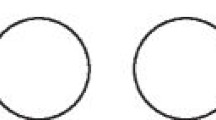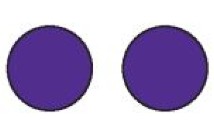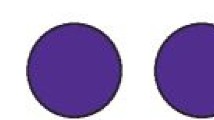Abstract
Data sources
The Cochrane Oral Health Group Trials Register, the Cochrane Central Register of Controlled Trials (CENTRAL), Medline and Embase databases were searched. Authors of trials were contacted as were more than 55 dental implant manufacturers and an Internet discussion group to find unpublished or ongoing randomised controlled trials (RCTs).
Study selection
All randomised controlled trials (RCTs) evaluating interventions to treat peri-implantitis, including studies with parallel group and split-mouth designs.
Data extraction and synthesis
Screening of eligible studies, assessment of the methodological quality of the trials and data extraction were conducted in duplicate and independently by two review authors. Results were expressed as random-effects models using mean differences for continuous outcomes and risk ratios for dichotomous outcomes with 95% confidence intervals (CI). Heterogeneity was to be investigated including both clinical and methodological factors.
Results
Nine studies were included with follow-up ranging from three months to four years. They compared different non-surgical interventions (five trials); adjunctive treatments to non-surgical interventions (one trial); different surgical interventions (two trials); adjunctive treatments to surgical interventions (one trial). No study was judged to be at low risk of bias. Statistically significant differences were observed in two small single trials judged to be at unclear or high risk of bias.
After four months, adjunctive local antibiotics to manual debridement in patients who lost at least 50% of the bone around implants showed improved mean probing attachment levels (PAL) of 0.61 mm (95% confidence interval (CI) 0.40 to 0.82) and reduced probing pockets depths (PPD) of 0.59 mm (95% CI 0.39 to 0.79). After four years, patients with peri-implant infrabony defects > 3 mm treated with Bio-Oss and resorbable barriers gained 1.4 mm more PAL (95%CI 0.24 to 2.56) and 1.4 mm PPD (95%CI 0.81 to 1.99) than patients treated with a nanocrystalline hydroxyapatite.
Conclusions
There is no reliable evidence suggesting which could be the most effective interventions for treating peri-implantitis. This is not to say that currently used interventions are not effective. A single small trial at unclear risk of bias showed the use of local antibiotics in addition to manual subgingival debridement was associated with a 0.6 mm additional improvement for PAL and PPD over a four-month period in patients affected by severe forms of peri-implantitis.
Another small single trial at high risk of bias showed that after four years, improved PAL and PPD of about 1.4 mm were obtained when using Bio-Oss with resorbable barriers compared to a nanocrystalline hydroxyapatite in peri-implant infrabony defects.
There is no evidence from four trials that the more complex and expensive therapies were more beneficial than the control therapies which basically consisted of simple subgingival mechanical debridement. Follow-up longer than one year suggested recurrence of periimplantitis in up to 100% of the treated cases for some of the tested interventions. As this can be a chronic disease, re-treatment may be necessary. Larger well-designed RCTs with follow-up longer than one year are needed.
Similar content being viewed by others
Commentary
Peri-implant mucositis is used to describe the presence of inflammation in the mucosa at an implant with no signs of loss of supporting bone and peri-implantitis in addition to inflammation in the mucosa is characterised by loss of supporting bone.1 Though there is controversy about diagnosis and aetiology of peri-implantitis, it is clear that some sort of intervention is needed for management of this condition. This systematic review aimed to determine the most effective treatment currently available for management of peri-implantitis. An extensive review, which is representative of the standards of the Cochrane Collaboration, was conducted to identify randomised clinical trials (RCTs) that compared different treatments for peri-implantitis.
A total of 15 RCTs were identified in the literature, out of which nine trials met the pre-determined criteria. Out of these, five trials compared various non-surgical interventions, two trials compared different surgical interventions and one trial each compared adjunctive treatments to non-surgical interventions and surgical interventions. The follow-up for these nine trials ranged from as low as three months to four years. Most trials had unclear or high risk of bias and none was judged to be at low risk of bias. Probing attachment levels (PAL) and probing pocket depths (PPD) were used as indices to measure effectiveness of various treatments.
From the evidence presented in this review, use of local antibiotics in addition to manual subgingival debridement was associated with a 0.6 mm additional improvement for PAL and PPD over a four-month period. Also, improved PAL and PPD of about 1.4 mm were obtained when using bovine bone with resorbable membrane compared to a nanocrystalline hydroxyapatite in peri-implant infrabony defects. However, both these trials had small sample sizes and risk of bias was prevalent. The majority of trials testing more elaborative and expensive therapies did not show any statistically or clinically significant advantages over the deep mechanical cleaning around the affected implants. Interestingly, in trials with follow-up longer than one year, recurrence of peri-implantitis in up to 100% of the treated cases was observed for some of the tested interventions. Therefore, well-designed RCTs with larger sample sizes and follow-up longer than one year are needed. Peri-implantitis being a chronic disease, re-treatment may be necessary for many of these interventions. The authors of this systematic review had insufficient information to conclude which intervention might result in fewer re-treatments in the future.
Though the objective of this systematic review was to compare different interventions for peri-implantitis, it would have been beneficial to the reader if data from the trials were categorised based on partially edentulous patients or completely edentulous patients, history of periodontal disease or lack of disease and whether implants with peri-implantitis had screw-retained or cement-retained restorations. Partially edentulous patients especially with history of, or ongoing periodontal disease can harbour microorganisms that can be attributed to peri-implantitis; this may be different in completely edentulous patients and therefore effective interventions can vary. Additionally, one cannot ignore the fact that uncleaned excess cement that is exclusive to cement retained restorations, can cause inflammation and future bone loss; consequently, management of this type of situation is significantly different from inflammation and bone loss related to screw-retained restorations.
Practice Points
-
Interventions for management of peri-implantitis range from simple measures such subgingival debridement to complex ones such as resective surgery.
-
Presently, there is minimal evidence to determine which is the most effective way to treat peri-implantitis.
-
Due to the possibility of recurrence of peri-implantitis and due to lack of evidence for effectiveness of more complex and expensive therapies, simpler approaches may be preferable.
References
Zitzmann NU, Berglundh T . Definition and prevalence of peri-implant diseases. J Clin Periodontol. 2008; 35: 286–291.
Author information
Authors and Affiliations
Additional information
Address for Correspondence Luisa Fernandez Mauleffinch, Review Group Co-ordinator, Cochrane Oral Health Group, MANDEC, School of Dentistry, University of Manchester, Higher Cambridge Street, Manchester, M15 6FH, UK. E-mail luisa.fernandez@manchester.ac.uk
Esposito M, Grusovin MG, Worthington HV. Interventions for replacing missing teeth: treatment of peri-implantitis. Cochrane Database of Syst Rev. 2012; Issue 1. Art. No.: CD004970.
This paper is based on a Cochrane Review published in the Cochrane Library 2012, issue 1 (see www.thecochranelibrary.com for information). Cochrane Reviews are regularly updated as new evidence emerges and in response to feedback, and the Cochrane Library should be consulted for the most recent version of the review.
Rights and permissions
About this article
Cite this article
Bidra, A. No reliable evidence suggesting what is the most effective interventions for treating peri-implantitis. Evid Based Dent 13, 50–51 (2012). https://doi.org/10.1038/sj.ebd.6400861
Published:
Issue Date:
DOI: https://doi.org/10.1038/sj.ebd.6400861
This article is cited by
-
Peri-implantitis. Part 3: Current modes of management
British Dental Journal (2014)



